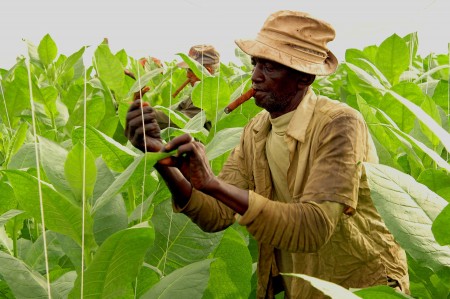
Cigar News
Culture and History of Cuba’s Cigars : The Main Brands
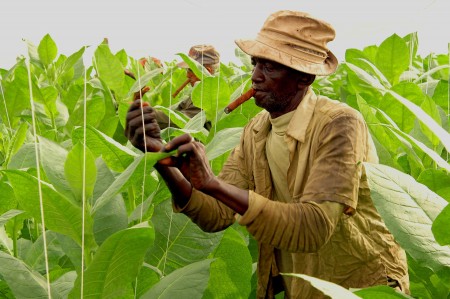
On July 1 2015, President Barack Obama stated:
“I can announce that the United States has agreed to formally establish diplomatic relations with the Republic of Cuba, and reopen embassies in our respective countries. This is a historic step forward in our efforts to normalize relations with the Cuban government and people, and begin a new chapter with our neighbors in the Americas.”
Following this speech, news broke that Vice President Biden will be travelling to Havana to raise the American flag over the U.S. embassy for the first time in the half-century length of the embargo.
In Havana, the current Cuban President Raul Castro spoke on television with similarly positive news:
“We want to develop a friendship between our two nations that is based on the equality of rights and the people’s free will.”
His speech was followed by an announcement of the reopening of Cuban embassies in the U.S. by July 20th. Both leaders’ speeches highlighted a willingness to work together but they did not hide the fact that there will be some issues with the reopening of relations between the two old enemies. However, it is clear that both are aware that isolationism simply does not work between two countries located so closely geographically to each other and that the past 54 years have been a failure on the part of both governments.
However exciting this news might be, many are not optimistic for trade to be opening any time soon. There are decades upon decades of ill will to get through. Castro and his brother are still in control and making demands of their northern neighbor such as the returning of the now world infamous Guantanamo Bay Naval Base into Cuban military hands and compensatory demands for damage allegedly caused by the U.S.’s policies, the hope for a near future trade agreement is definitely quite bleak.
Still, one should look and hope that an arrangement can be made to allow the merging and exploration of each other’s cultures to promote a better social and economic environment in both countries. Let the stubbornness of Cold War policies and the destruction they have caused fade into the past. In this mindset, let us take a stroll through the history about some of Cuba’s most important and famous cigar manufacturers and appreciate the traditions and famous legacies these particular brands have brought to the cigar world.
Romeo y Julieta
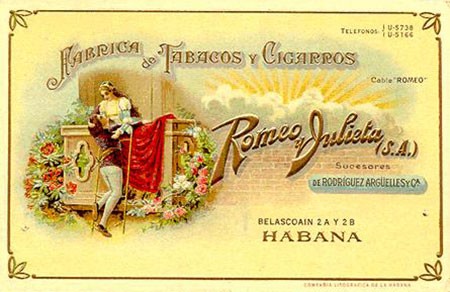
Romeo y Julieta evokes passion, romance, and of course the art of good smoking in some circles. This brand dates back to 1875 where it was created from a partnership between Inocenio Alvarez and Manin Garcia with the idea of creating a fine jewel of a cigar. Later, in 1897, the brand was bought out by the associates Rodriguez Arguelles & Co. Shortly thereafter, the association dissolved and from its ashes rose the Cuban Romeo y Julieta Cigar Factory.
This is when the brand came into its own; Rodriguez was a man who knew how to market a cigar. He took his newly acquired brand and promoted it to wealthy clients offering personalized bands and cigar variations for their purchases. This is one of the reasons there are so many varieties of Romeo y Julieta today.
Besides building a market of wealthy clientele, he bought a racing horse that he named Julieta promoting his brand to an even broader demographic of smokers. Even more fame came to the brand due to an unlikely source during WWII. Winston Churchill was well known for eloquent speeches, writing, his intense wartime leadership, and of course his love of cigars. Once Rodriguez became aware that Churchill’s cigar of choice was one of his lines, and always one to capitalize on an opportunity, the company came out with a special line of 7” cigars known as “Churchills” in his honor. With its menacing shape and long size the “Churchill” was made this was specifically so Winston could use it as an intimidation tool during long diplomatic discussion to make things just that much worse when you find yourself in an argument with a political rock star.
Clever marketing, vast production efforts, and a goal of quality caused this company to skyrocket in popularity through the international markets. To this day Romeo y Julieta provides high quality and beautiful cigars that can bring the hopeless romantic out in any smoker.
Montecristo
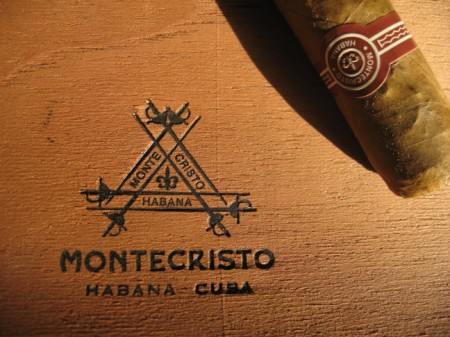
The history of Montecristo begins with its literary namesake, the Count of Montecristo. A down trodden and betrayed young man stumbles upon a vast wealth and uses it to take revenge on those who did him ill in his youth. Nearly a century later the legacy of that legendary novel came true in a sense with the Montecristo Cigar Company.
Montecristo came into being from the association of Alonso Menendez and Jose Garcia, two talented Cuban cigar makers, who felt a connection with the story of Edmond Dantes after hearing it read to them while rolling cigars. They came together in the face of the old companies and wanted to dominate the entire market with their savvy and impeccable product. After multiple mergers with other small cigar companies in a relatively short time span, this cigar brand completely swept the Cuban market due partially to intelligent marketing but mainly from the unique strong characteristics of their product.
By 1939, Montecristo became the number one producer in the country. This quick saturation of the Cuban marketplace caused an absolute explosion in the international markets and quickly became the number one seller of Cuban cigars in the world. They continued to dominate all other brands and even gained endorsement from Che Guevera in later decades as his brand of choice.
The original Montecristo line consisted of No. 1 through No. 5; No. 4 still holds the title as the highest sales of any one cigar in the world and No. 2 is said, by some, to be the benchmark that all other Cuban cigars should be compared. The Montecristo is the classic Cuban cigar, one that beckons the feeling of boldness, rebelliousness, and prestige, much like Cuba itself.
Cohiba
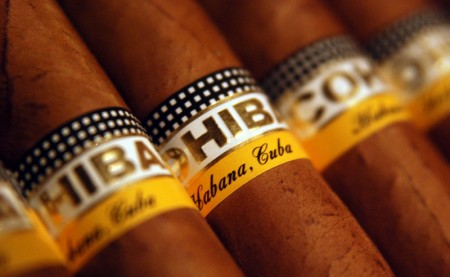
Finally, yet most definitely not least let us talk of the legendary Cohiba. The tale of how Cohiba came to be starts with the man himself, Fidel Castro. As Castro was walking with his bodyguards, he noticed a powerful aroma coming from one of his men’s cigar. Castro demanded the stogie and immediately fell in love with its smoothness and unparalleled flavor going so far as to track down the artisan who created it, a friend of the bodyguard, Eduardo Ribera.
The first manufacturing of Cohibas came immediately afterwards from the orders of Castro and was organized with the skills of Ernesto Che Guevara in the 1960’s. Ribera decided on the name Cohiba, as it was a special term for the tobacco he used to create them, it is what they called tobacco in the Pinar Del Rio province of Cuba and only used if the tobacco is harvested with care.
Cohiba is the culmination of two titans in Cuba’s history working together with a talented cigar artisan using an exquisite tobacco variety to make what they considered the perfect cigar. The most remarkable of habanos specialists and the best rollers of the region were pulled together for manufacturing process basing everything off Ribera’s recipes and Castro’s personal tastes. Along with the best of the best mentality during tobacco selection and production, a special process known as the “third fermentation” wherein the cigars are aged a further 18 months in wooden barrels gives the Cohiba its unique characteristics.
Due to all this specific and extreme care, production of Cohibas can be extremely limited. To further add to the mystique of the brand, up until 1982, it was only available to Cuban elite or given as diplomatic gifts to visiting politicians. To this day all true Cuban Cohibas go through the same process as the originals made by Ribera. Scarcity, a legendary brand name endorsed by historic Cuban leaders, and a unique production process all take part in causing the Cohiba to be an incredibly desirable product for cigar collectors and aficionados.
The Future of Cuban Cigars
So, can the U.S. and Cuba get over their bitterness towards each other and bring the dawn of a new Golden Age for Cigars? I personally could not tell you. I do hope so. More so than just for the Cigars, though do not get me wrong that is a very exciting prospect. Culture and history oozes from within the artificial walls these governments have put around the island. So think a bit next time you light up one of these Cigars, remember the legacy and importance these sticks of rolled tobacco have in a country a few miles south of Florida. Then think about the absurd situation we are in that has made it so that these cigars cannot be shared legally anymore. The two old bitter neighbors could be ending their feud soon and the benefits of peace may just be spilling over into a humidor near you.
1 thought on “Culture and History of Cuba’s Cigars : The Main Brands”
You must be logged in to post a comment.

Looks like we better stock up on Cuban cigars as they will soon become a rare product.